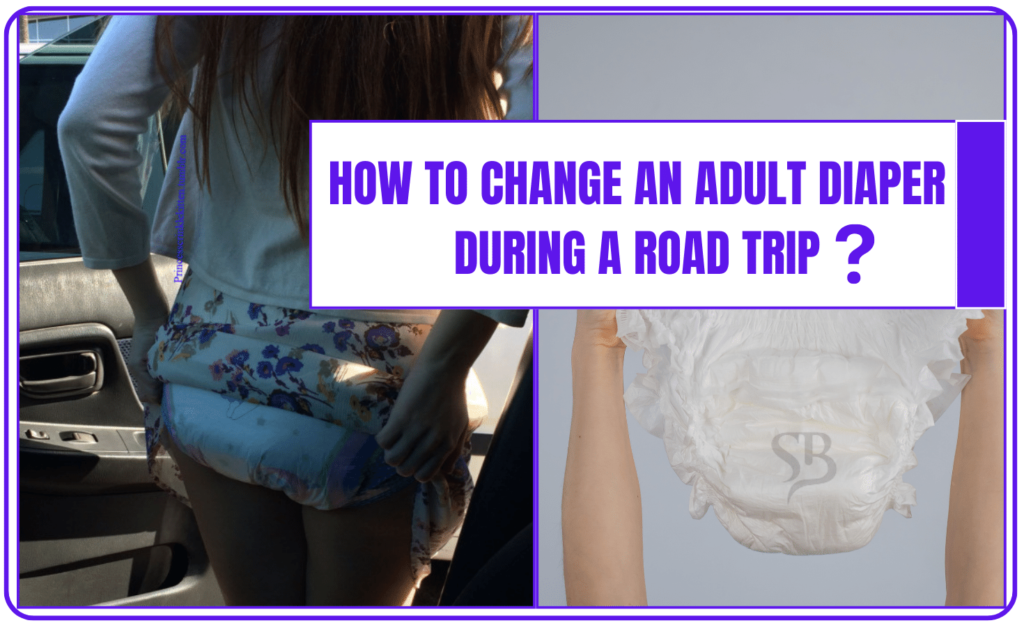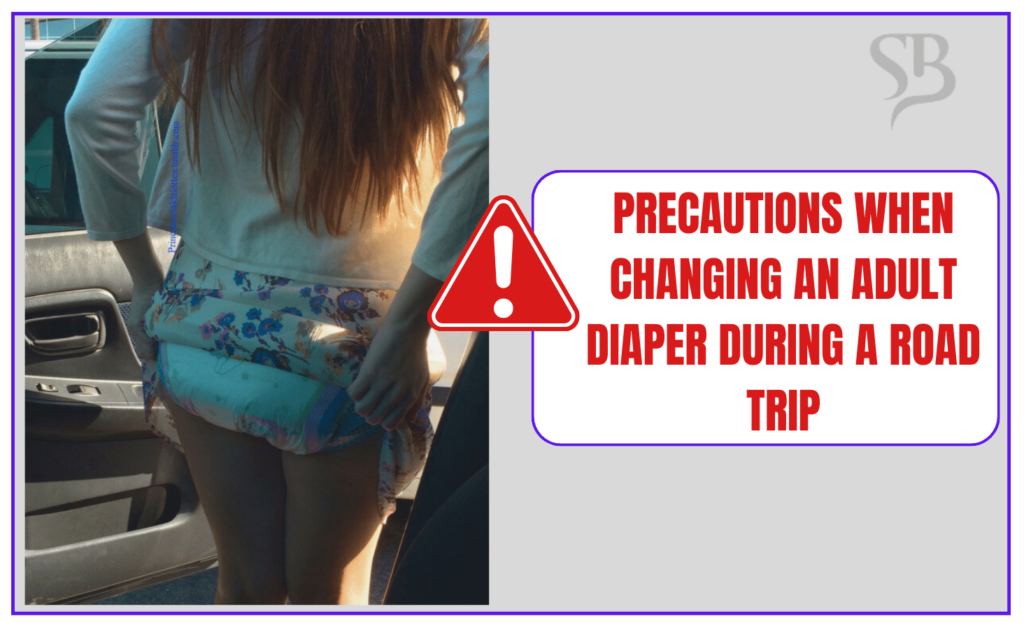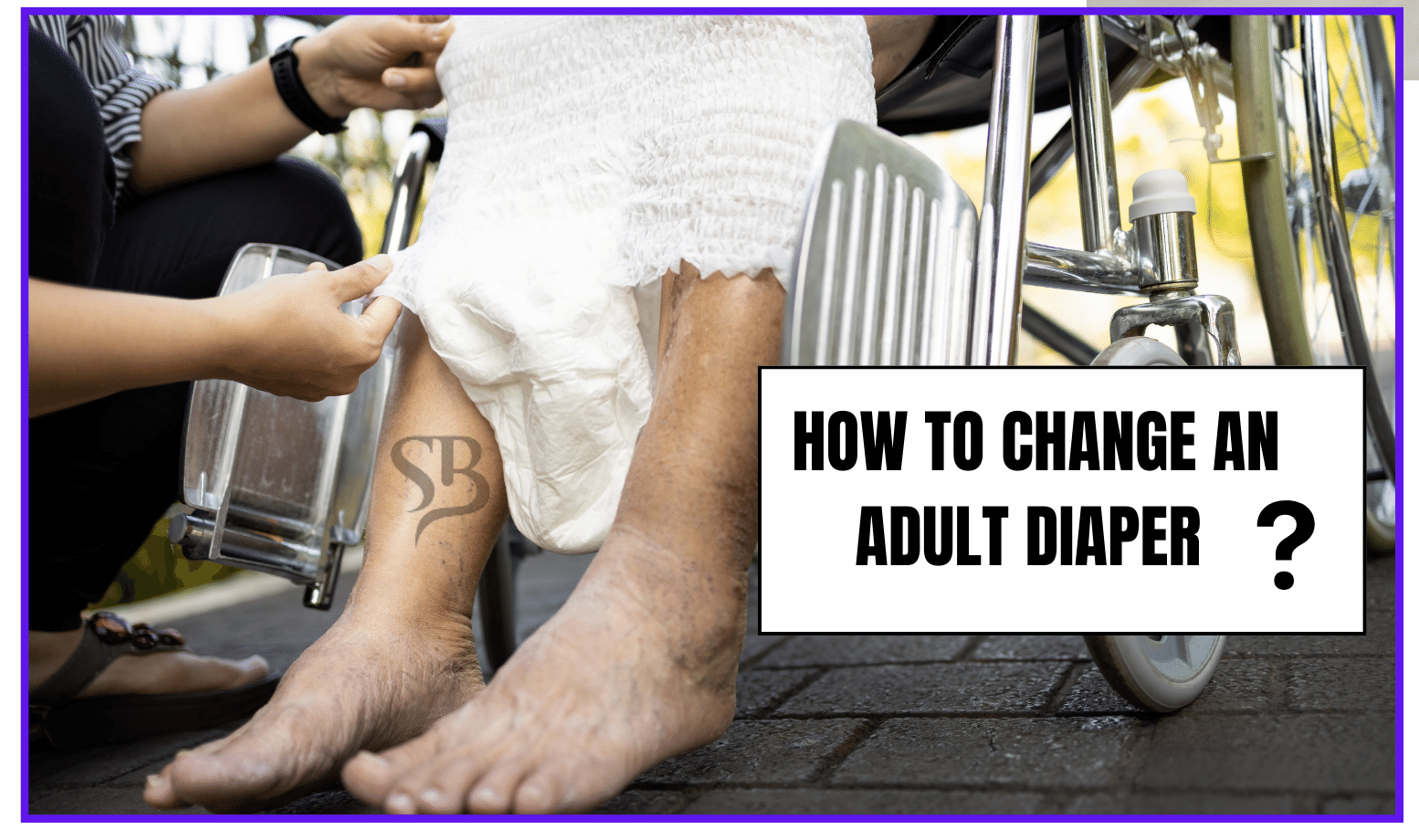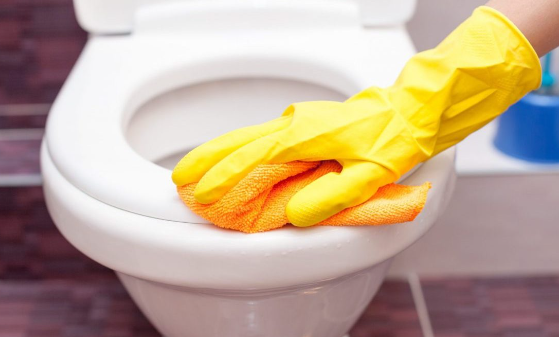How to Change an adult diaper with confidence! Our comprehensive guide provides step-by-step instructions for change an adult diaper, ensuring dignity and ease in every step of the process.
While changing an adult diaper can initially seem quite difficult, especially for new caretakers, with some guidance the process can become much more manageable.
Here is a breakdown of the step-by-step approach for changing an adult diaper both when the individual is in bed or during travel in a vehicle.
By taking a thoughtful approach and paying attention to details, changing an adult diaper can become a straightforward part of caring for a loved one’s needs.
For More: Why Is My Toilet Bubbling | Common Causes & Solutions
How To Change An Adult Diaper In Bed

Step 1: Gather Supplies
Before starting the diaper change, make sure you have all the necessary supplies within easy reach. This includes:
- Clean diapers
- Wipes or wet cloths
- Disposable gloves (if desired)
- Plastic bags for disposal
- Moisturizing cream or ointment (optional)
Step 2: Prepare the Area
Remove any clutter or items from the area around the bed and place a waterproof pad or towel underneath the individual to shield the mattress. Ensure the person lies conveniently on their back with adequate space surrounding them to move freely.
Step 3: Remove Clothing
Firstly, clear any clothes or blankets blocking the diaper space. Handle their clothes tenderly as certain spots may be touchy or sore.
Step 4: Put on Gloves
If using disposable gloves, put them on now to minimize direct contact with bodily fluids.
Step 5: Clean The Area
Begin clean-up with damp wipes or cloths. Use a front to back motion. Don’t neglect to use many wipes to stop bacteria spread. Ensure the region is dry before going further.
Step 6: Apply Cream (Optional)
If recommended by a healthcare professional, apply moisturizing cream or ointment to prevent skin irritation.
Step 7: Replace The Diaper
Next, remove the dirty diaper very carefully. Avoid contact with any waste using your gloves. Lift the person’s legs a bit and move the dirty diaper aside. Slip a fresh diaper underneath, making sure it’s a perfect, comfortable fit. Secure the diaper properly with the tabs.
Step 8: Dispose Of Garbage
Dispose of used wipes, gloves, and the soiled diaper in plastic bags. Tie off the bag securely and place it in a designated trash bin.
Step 9: Sanitize Hands
Wash your hands with soap and warm water or use hand sanitizer after completing the diaper change.
For More: How To Fix a Toilet That Won’t Flush But Is Not Clogged
Complications And Precautions
When changing an adult diaper in bed, there are a few things one should be aware of to avoid potential issues.
It’s important to have all the necessary supplies easily accessible so everything is readily available without having to get up and down. This includes diapers, wipes, rash cream if needed
If one’s skin is exposed to moisture for extended periods of time, it can potentially cause the skin to deteriorate and become irritated or inflamed.
To help prevent this from occurring, it is a good idea to regularly apply protective barrier creams or ointments to the skin, as these can form a physical shield and lock in moisture.
Pressure sores, also known as bed sores or decubitus ulcers, are areas of damaged skin and underlying tissue that form when prolonged pressure is placed on certain areas of the body.
Individuals who have limited mobility and spend much of their day resting in bed are particularly susceptible to developing these sores. When pressure is applied to soft tissue for extended periods of time, it can restrict blood flow to the area.
Incontinence Associated Dermatitis (IAD) is a prevalent skin issue experienced by people experiencing incontinence. The affected region may become irritated, sore, and distressing due to IAD. You can help control IAD by frequently and completely changing diapers whenever they become wet or soiled.
It is also wise to use gentle skin care products formulated for sensitive skin in the affected area. Regular changes and proper skincare can go a long way in preventing further irritation and allowing the skin to heal.
How To Change An Adult Diaper During A Road Trip

Changing an adult diaper during a road trip requires careful planning and preparation. Here are the steps involved:
Step 1: Find A Suitable Location
Look for rest stops, gas stations, or parking lots where you can pull over safely and discreetly. If possible, choose a location with accessible facilities such as toilets or baby changing rooms.
Step 2: Gather Supplies
Pack a travel kit containing all necessary items, including extra diapers, wipes, disposable gloves, and plastic bags for garbage disposal. Keep this kit easily accessible in your vehicle.
Step 3: Assist The Person Out Of The Vehicle
Help the individual exit the car carefully, supporting them as needed. Encourage them to use the toilet if available, as this can make the diaper change process simpler.
Step 4: Perform The Diaper Change
Follow the same steps outlined above for changing an adult diaper in bed. You may need to modify your technique depending on the space constraints of your chosen location.
Step 5: Dispose Of Garbage
Securely tie off any used wipes, gloves, and diapers in plastic bags before placing them in a nearby trash bin.
Step 6: Return To The Vehicle
Assist the person back into the vehicle, ensuring they are comfortable and properly positioned.
For More: Do Bathroom Fans Use a Lot Of Electricity?
Precautions When Changing An Adult Diaper During A Road Trip

During a road trip, consider the following precautions:
Schedule Frequent Breaks: Plan regular breaks throughout your journey to allow for diaper changes and stretching exercises.
Stay Hydrated: Drinking plenty of fluids is essential for overall health, but it may increase the frequency of urination. Balance staying hydrated with scheduling frequent bathroom breaks.
Secure Loose Objects: Store loose objects securely in your vehicle to prevent them from becoming projectiles during sudden movements or braking.
Practice Safe Driving Habits: Always prioritize safety when driving, avoiding distractions and adhering to traffic laws.
For More: What is The Best Chemical to Clean a Bathroom?
What Are Some Common Complications When Changing An Adult Diaper?
Certainly! Changing an adult diaper involves more considerations than changing a child’s diaper. Here are some common complications to be aware of:
- Infections:
- Urinary tract infections (UTIs): Bacteria in the diaper area can lead to UTIs. Proper hygiene and timely changes are crucial to prevent infections.
- Staph and impetigo: These skin infections can also occur due to bacteria. Regular diaper changes and cleanliness are essential.
- Skin Irritation and Rashes:
- Prolonged exposure to moisture can cause skin irritation, redness, and rashes. Ensure thorough cleansing and use barrier creams if needed.
- Allergic Reactions:
- Some individuals may be allergic to certain diaper materials (e.g., latex). Pay attention to any signs of discomfort or redness.
- Worsened Incontinence Symptoms:
- UTIs and other infections can exacerbate incontinence symptoms, such as increased urgency and frequency of urination1.
- Handling Larger Messes:
- Adult diapers hold more waste, making the process messier. Disposable gloves are essential to protect against direct contact.
FAQs
Can I reuse disposable adult diapers?
While it might seem cost-effective, reusing disposable diapers is not recommended. They are designed for single use and become less effective after removal. Reusing them can lead to leaks, skin irritation, and hygiene issues. Always opt for fresh diapers.
How do I prevent diaper rash?
Diaper rash can be uncomfortable for your loved one. To prevent it:
- Change diapers promptly.
- Use barrier creams to protect the skin.
- Ensure thorough cleansing during each change.
- Allow the skin to air-dry before putting on a new diaper.
What if my loved one is resistant to diaper changes?
Resistance is common, especially if your loved one feels embarrassed or vulnerable. Try these strategies:
- Explain the process calmly and reassure them.
- Involve them in the process as much as possible.
- Distract with conversation or soothing music.
- Be patient and empathetic.
How do I handle leaks during a road trip?
Leaks can be tricky during travel. Consider these tips:
- Use extra-absorbent briefs.
- Layer disposable bed protection pads under your loved one.
- Pack extra supplies, including wipes and gloves.
- Plan rest stops strategically.
Can I change an adult diaper while they’re standing?
- Yes, it’s possible. Follow these steps:
- Have your loved one stand near a stable surface (like a bed or chair).
- Unfasten the old diaper.
- Slide it out from underneath while they remain standing.
- Position the new diaper and secure it.
Conclusion
Basically, when you’re changing an adult diaper, take your time. Pay attention to small details. Be sensitive. Consider the person you’re helping.
When you understand how to do it right, you can make your loved one feel cared for. It doesn’t matter if you’re at home or on a trip, cleanliness and comfort are key.
Keep trying. Practice makes this daunting task easier. It can even bring you closer. Always remember this: everyone deserves respect, no matter their abilities. When you’re providing care, you’re not just meeting basic needs. You’re also taking care of their emotional health as well.







